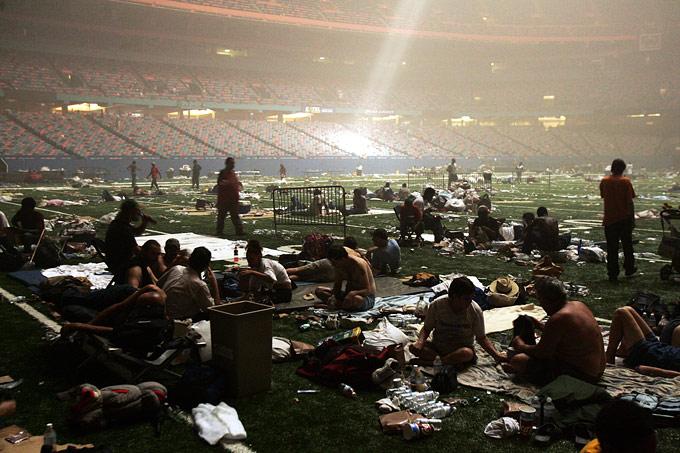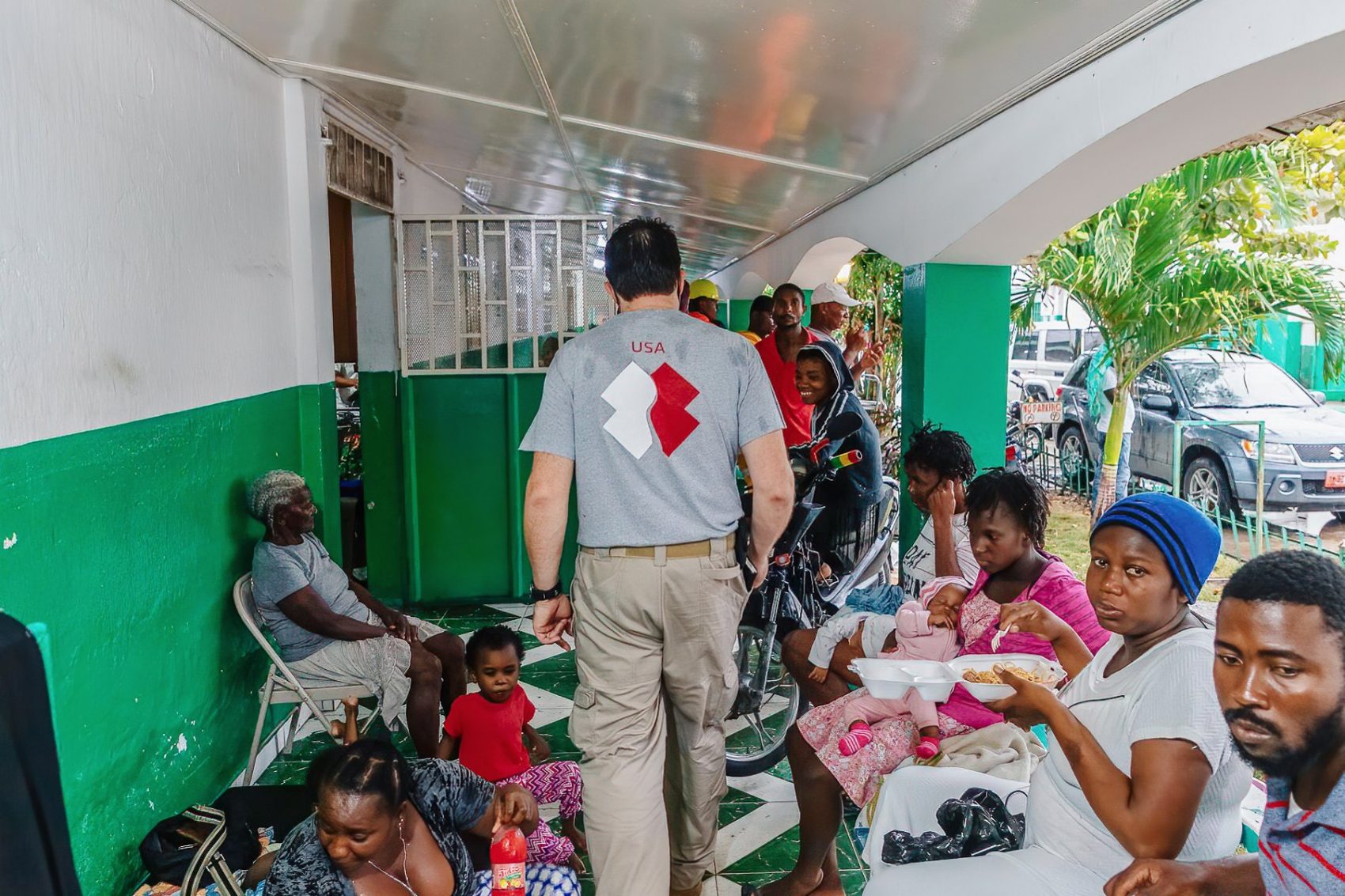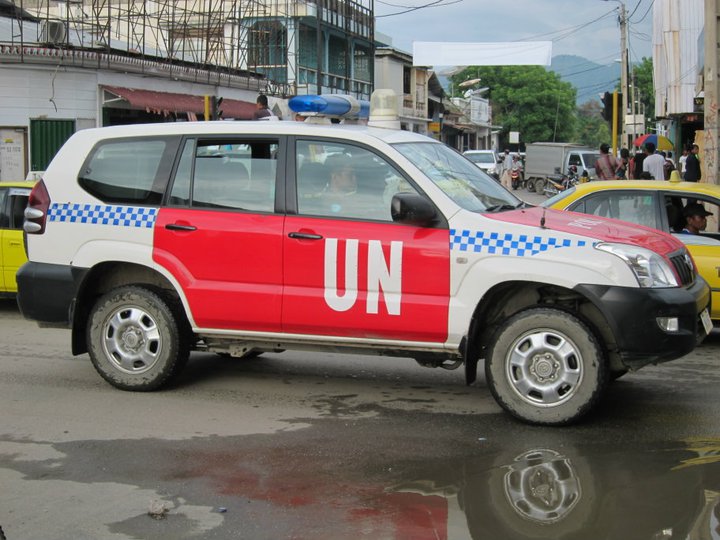
Natural Disasters Are Social Disasters
Natural disasters are extreme weather patterns, including hurricanes, earthquakes, and floods that occur in all regions of the world without warning. Natural disasters are frequently referred to as acts of God or great equalizers. However, these events disproportionately affect poorer, more marginalized, underdeveloped communities and expose underlying patterns of exploitation, oppression, and discrimination across society. The legacies of slow violence, colonialism, slavery, and neo-liberal capitalism have contributed to longstanding structures of oppression and marginalization, that worsen the effects of natural disasters.
As the political philosopher, Jean-Jacques Rousseau once said: “Admit, for example, that nature did not construct twenty thousand houses of six to seven stories there, and that if the inhabitants of this great city had been more equally spread out and more lightly lodged, the damage would have been much less and perhaps of no account.” Here, Rousseau highlights that devastation caused by disasters is provoked by social inequalities and could be largely prevented or completely avoided with more equitable ideologies, structures, and politics that protect all members of society.
Natural disasters are social disasters, but historically, they have not been treated or responded to as such. In most cases, foreign/humanitarian aid from governments or brief assistance from Non-Governmental Organizations (NGOs) is how natural disasters are dealt with. This is problematic, though, because sending money or emergency teams to a devastated area more so addresses the symptoms of the problem rather than their underlying root causes. When disasters are responded to under the agenda of a government, foreign or domestic, or an NGO, there tends to be both a sense of partiality and a neglect of the affected community’s needs, which reinforces systems of oppression and marginalization.
Development
As understood by the World-Systems Theory, nation-states can be divided into three groups: the core, the semi-periphery, and the periphery. The core can be defined by the economically developed countries while the periphery refers to their economically underdeveloped counterparts with very little industry or market, with the semi-periphery falling somewhere in-between. Core countries, like the United States and Great Britain, have continuously colonized and exploited periphery nations, many of which are South American and African, for their raw resources and cheap labor. This cycle makes it so periphery countries are dependent on the economies of core nations.
“The penetration of core capital into the peripheral economies is taken as the single most important conditioning factor that has created underdevelopment in Third World social formations.”
This matters because when periphery countries are hit by natural disasters, they are severely under-qualified to deal with the instant and long-term effects compared to the core countries who have exploited them. The primary reason periphery countries do not have the infrastructure or political, healthcare, and public transportation systems of core countries is because they were exploited, oppressed, marginalized, and left by them. A clear example of this exploitation is Haiti, a small island nation once colonized by the French. Haiti is now overpopulated and has weak political, healthcare, and infrastructure systems. Since 2010, they have been hit by several earthquakes from which they have not recovered. Several billions of dollars in aid have been sent, but there are still people living in displaced camps who have no other place to go because of historically weak politics, infrastructure, and healthcare.
This is not only an international issue but a domestic one as well. Take the United States, for example, considered by many to be the most developed nation on the planet. This does not mean that there are not underdeveloped or neglected regions of the nation, though. According to the National Oceanic and Atmospheric Administration (NOAA), the United States annually suffers from 7.1 weather and climate disasters that cost $47.6 billion every year. This is significant because these disasters disproportionately impact socially marginalized and historically oppressed groups. In studies done by the US National Library of Medicine and Rice University, the conclusions drawn were that:
- “African Americans and Latinos also are more likely to experience physical hardships and trauma during and after a disaster, including personal loss, damage to property, and delay in restoration of utility services, such as electricity and water, and other basic resources including food, shelter, and income.”
- “African Americans and Latinos also may have increased risk of adverse mental health outcomes post-disaster, including posttraumatic stress, depression, and panic attacks.”
- “Whites accumulate more wealth after natural disasters while residents of color accumulate less.”
- “Natural disasters were responsible for a $133,000 increase in inequality between homeowners and renters in the hardest hit counties.”
- “Natural disasters are responsible for a $159,000 increase in the educational wealth gap.”
Natural disasters cannot be great equalizers if they have different impacts based on race and class status.
Three Factors
Political scientists, geologists, and disaster analysts have found that three factors need to be examined when studying a disaster: “the triggering natural hazard event (such as the earthquake striking in the Atlantic Ocean outside Portugal); the population exposed to the event (such as the 275,000 citizens of Libson); and the vulnerability of that population (higher for the people in seven-story buildings).” Even though each of these three factors contributes to providing a clear and unbiased understanding of a natural disaster and how it impacts society, looking into vulnerability levels can help clarify why natural disasters are social disasters.
“[Vulnerability] is a complex characteristic produced by a combination of factors derived especially (but not entirely) from class, gender, and ethnicity. Differences in these socio-economic factors result in hazzards having a different degree of impact.”
For example, when a hurricane is threatening the coastal United States, the most vulnerable people will generally include those who are colored, from the lower class, or older. This is true because historically in the United States, colored communities frequently have lived in low-income housing that is more threatened by disasters. These housing units may be high-rises, neglected apartments, or homes that are not up to code, but either way, they are significantly more susceptible to major damage from a climatic event. Additionally, colored and lower-class individuals historically have not had equitable access to healthcare, transportation, banks, or other social institutions that may allow for higher preparedness or mitigation going into a disaster. Being able to get up and relocate before a disaster is a privilege that not all American’s and people around the globe have; it is unpredictable, expensive, and takes a lot of time.
Evidence
Hurricane Katrina, New Orleans, Louisiana 2005
When Hurricane Katrina hit New Orleans, Louisiana, in August of 2005, the Black community was much more vulnerable and impacted severely worse than their white counterparts. Unable to up and leave, their neighborhoods were flooded, their homes were uninsured, and they were stuck in a category five hurricane. According to a 2006 study:
- “The largest proportion of Blacks is concentrated within the city limits [of New Orleans], representing 68% of the population, many of whom lived in the most low-lying areas—those most vulnerable to Hurricane Katrina. In addition, New Orleans historically has been one of the cities with the largest racial disparities in income and wealth.”
- “The flooding caused by the hurricane was particularly damaging to Black neighborhoods, communities that were relatively uninsured against floods.”
- “The discrepancies in socioeconomic status were exacerbated by discrimination in the labor market, which on the whole prevented Blacks from gaining jobs, specifically ones of higher status, and prevented acquisition of material resources, such as personal cars, that would have enabled them to evacuate New Orleans for safer areas as Hurricane Katrina approached.”
- “The Select Bipartisan Committee to Investigate the Preparation for and Response to Hurricane Katrina (2006) identified several junctures where a lack of decisiveness [by the government, FEMA, and HUD] to intervene had tragic consequences, particularly for Blacks, in New Orleans.”
- “Despite adequate warning 56 hours before landfall, orders for mandatory evacuation of the most vulnerable areas—those inhabited disproportionately by Blacks—were delayed until 19 hours before landfall.”
- “On September 1, 2005, three days after Hurricane Katrina struck, thousands of evacuees who were fleeing the wretched conditions of the city and the Convention Center marched toward a bridge that would take them to safety. They were met at the bridge by the Gretna Police, who brandished rifles.” Several unarmed Blacks were killed in these scenarios.
Although it may not be fair to argue that the U.S. government and local governments were outwardly racist towards Blacks during Katrina, it is clear that their institutional practices did slim-to-nothing to help them before or after the hurricane. Black neighborhoods, including the Lower Ninth Ward, were instantly destroyed and not built back up for several years. Black homeowners received insurance checks for $16 for their homes and could not reclaim most of their belongings. Hurricane Katrina is a quintessential example of why natural disasters are social disasters and how different races and class statuses are affected more severely than others.
7.2 Magnitude Earthquake, Port-au-Prince, Haiti 2010
Haiti is a country that could be considered polar opposites of the United States; they do not share many of the same ideologies, do not share the same histories, and do not share the same politics. While the United States is a rich, developed nation that once was the colonizer of others, Haiti is one of the world’s poorest nations and was once a colony ruled by the more powerful Europeans. In a similar way that slavery in the United States hindered equitable development, “the legacy of French colonialism [in Haiti] included a tradition of hostility to political authority, a tendency toward corruption and immorality in public and private life, the example of ostentatious display of wealth, and a notorious lack of concern for sanitation and cleanliness in colonial urban centers.” So, when it comes to natural disasters, the United States and Haiti share some of the same flaws in how they prepare for, mitigate, and respond to them due to their history of socio-economic shortcomings.
When a 7.2 magnitude earthquake struck Haiti’s capital in 2010, it only made sense that their society would collapse for the years to come. Haiti’s history of foreign intervention and exploitation and domestic corruption and neglect primed this earthquake to be as destructive as it was. “The quality of housing construction and the lack of enforcement of building codes, dense populations living in these unsafe buildings near the epicenter of the earthquake, and the lack of infrastructure for response were more important in the final toll than the geological aspect of the disaster.” Thousands of deaths, hundreds of thousands of injuries, and millions of displaced people were the likely preventable but immediate effects of this disaster.
Similarly, the immediate international response was questionable:
“The U.S. military took over the Port-au-Prince airport on January 13 and immediately gave priority to its own military flights, turning away World Food Program flights, medical supplies from Doctors Without Borders, including an inflatable surgical hospital on January 16. The search for survivors was called off on January 22, which is also when Haiti, the U.S., and the UN signed an agreement granting the U.S. control of ports, airports, and roads.” Furthermore, “while Haitians attempted, in some cases with considerable success, to self-organiuze to support one another in the camps, power in the camps was excersized by a combination of NGO funders, landowners, and the UN.”
The response to the 2010 earthquake in Haiti revolved around money, power, and international politics rather than the needs of the helpless Haitian civilization. The reason that Haiti suffered so much from this earthquake can be largely attributed to French colonization and exploitation. Under the French, Haiti was actually a relatively rich country that exported sugar and coffee, but when the Haitians rebelled and claimed their independence, they were left with nothing but an agricultural economy that can only expand so much. Hundreds of years later, it seems as if the international response to the 2010 earthquake is modern colonization, given how the United States and other international organizations reacted.
Conclusion
Hurricane Katrina in New Orleans in 2005 and the 7.2 magnitude earthquake in Port-au-Prince in 2010 are both perfectly symbolic of the fact that natural disasters are social disasters. Certain preconditions determine how different communities and countries prepare for, mitigate, and respond to natural disasters. Richer, more developed countries are stronger equipped to deal with these climactic events; however, it is still clear that their oppressed and marginalized communities feel the worst of them. There is endless evidence that suggests natural disasters are social disasters, yet they are still not treated as such. There is no one way to minimize the effects that natural disasters have on poorer, more under-developed communities and countries, but more funding can create stronger infrastructure, healthcare, public transportation systems, and politics that could diminish a lot of the risk and vulnerability created by disasters.

